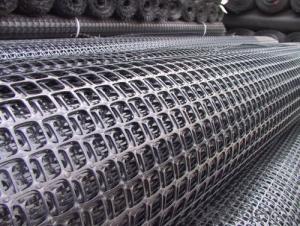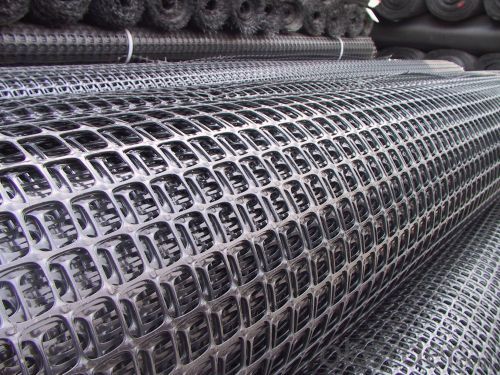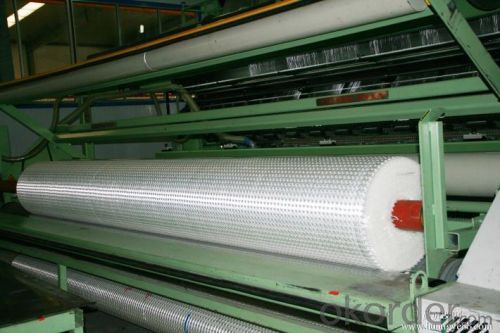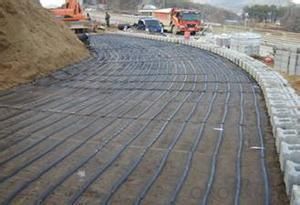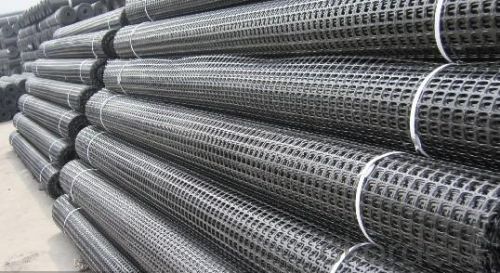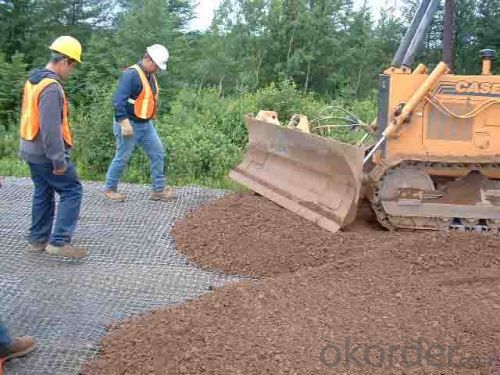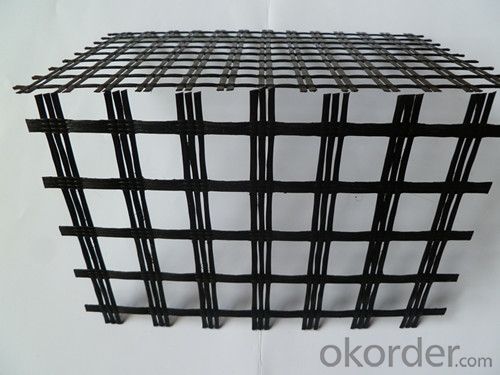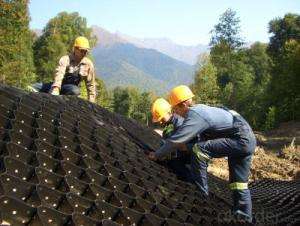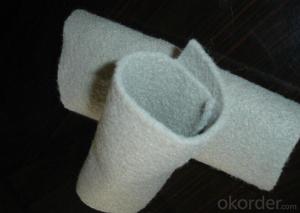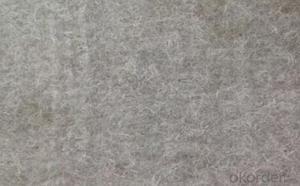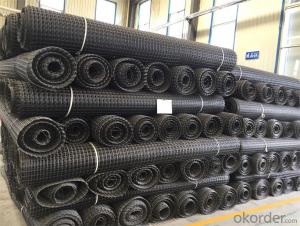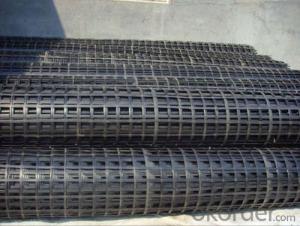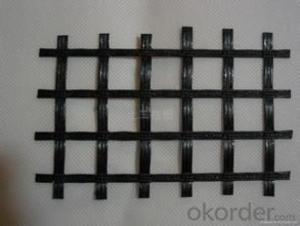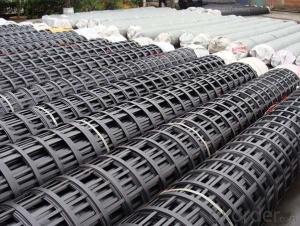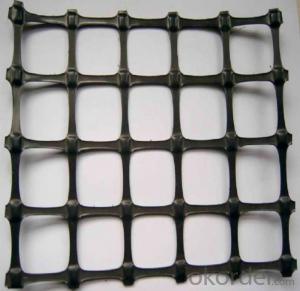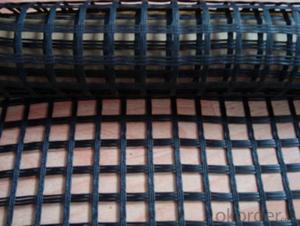PP Biaxial Geogrid for Road Construction 15KN-50KN - Biaxial Geogrids Suppliers in USA
- Loading Port:
- China main port
- Payment Terms:
- TT OR LC
- Min Order Qty:
- 20000 m²
- Supply Capability:
- 2000000 m²/month
OKorder Service Pledge
OKorder Financial Service
You Might Also Like
Biaxial PP Geogrid,
Biaxial geogrids are made of macromolecule polymer by the process of being stretched out, formed into lamella, punched regularly and then longitudinal and transverse elongated. They have much higher longitudinal and transverse tensile strength. These structures can supply alinking system to soil, which be used broadly to enable the permanent bearing capacity of roadbed.
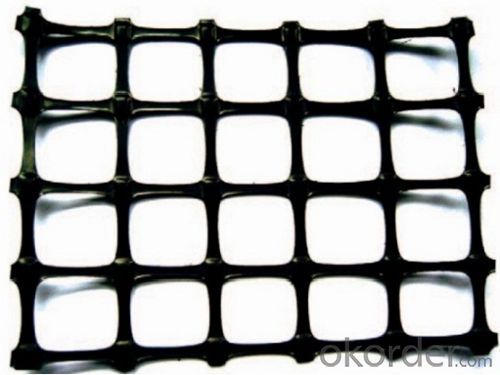
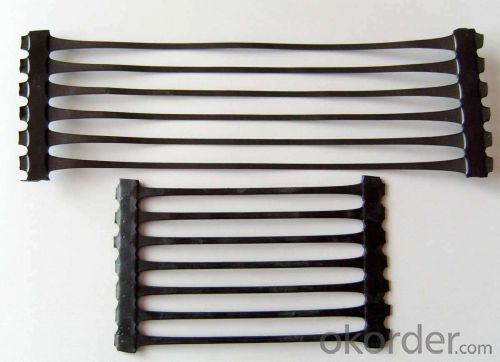
Biaxial Geogrid Features:
1. high tension resistance.
2. high plane torsion resistance modulus.
3. good creep resistance and stable chemical nature.
4. high mechanic damage resistance.
5. reduce filling thickness, improve bearing capacity.
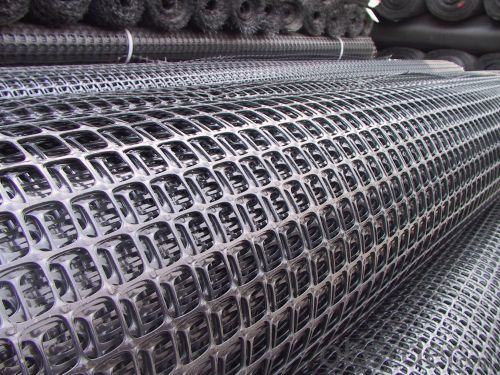
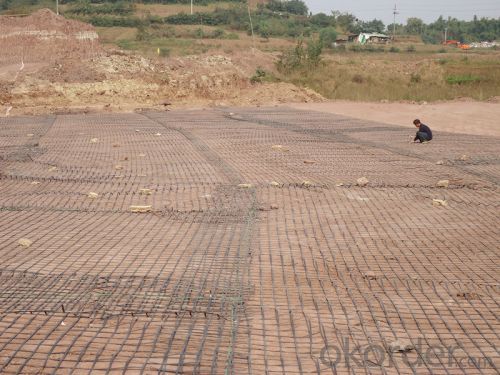
The main function as follows:
1.Reinforce the base, efficiently allot and diffuse the pressure, prolong the using time;
2.Increase the load-bearing capabilities;
3.Avoid the base becoming deformed and creaking (for the material washed away);
4.Improve the endure, reduce the pressure of the blocking wall, save the cost, prolong the using time, and reduce the servicing;
5.Reduce the crook and track, delay 3-9 times of the appearance of the crack, reduce 36% of the thickness of the structure by adding the geogrid into the base and cover of the road,
6.Be applicable of all kinds of soil;
7.Be easy to construct and reduce the cost.
FAQ:
Q: What is your MOQ?
A: Normally, 1000 m2 per order.
Q: What is your delivery time? Can we have it sooner?
A: 2 days for sample, 3-5 days against 1x40HQ
Q: What is your payment terms?
A: T/T, Paypal (3% surcharge), Western Union or 30% deposit 70% L/C.
- Q: Are geogrids suitable for use in slope stabilization for mining haul roads?
- Yes, geogrids are suitable for use in slope stabilization for mining haul roads. Geogrids are engineered materials that provide reinforcement and stability to soil, improving its load-bearing capacity. They are commonly used in various applications, including slope stabilization, to prevent soil erosion and maintain the integrity of the road. By distributing the load more evenly and reducing the potential for soil movement, geogrids enhance the safety and durability of mining haul roads.
- Q: How do geogrids improve the performance of unpaved trails?
- Geogrids improve the performance of unpaved trails by providing reinforcement and stabilization to the soil, preventing erosion and rutting. They distribute the load more evenly, reducing the potential for sinking or shifting. Additionally, geogrids increase the tensile strength of the trail, allowing it to withstand heavy traffic and weather conditions, thus extending its lifespan and reducing maintenance needs.
- Q: Can geogrids be used in temporary construction access roads?
- Yes, geogrids can be used in temporary construction access roads. Geogrids are designed to provide reinforcement and stabilization to the ground, making them suitable for temporary access roads that may be subjected to heavy construction equipment and frequent traffic. They help distribute the load and prevent the road from rutting or becoming unstable.
- Q: Performance parameters of steel plastic geogrid
- gsz30 30 30 30 30 30≤3≤3≤3≤3 232 232 gsz40≥35 40 40 40 40 40≤3≤3≤3≤3 149 149~35≥gsz50(A)50 50 50 50 50≤3≤3≤3≤3 220 220~35≥gsz50(B)50 50 50 50 50≤3≤3≤3≤3 125 125≥35 gsz60(一)60 60 60 60 60≤3≤3≤3≤3 170 170~35≥gsz60(B)60 60 60 60 60≤3≤3≤3≤3 107 107 gsz70 35≥70 70 70 70 70≤3≤3≤3≤3 137 137~35≥80 80 gsz80≤3≤3 80 80 80≤3≤3 113与&;lt;,,/指距> gsz100 113~35≥100 100 100 100 100 100≤3≤3≤3≤3 35≥95
- Q: What are the benefits of using geogrids in roadways?
- Geogrids offer several benefits in roadways, including improved stability and load-bearing capacity, reduced material and construction costs, increased service life of the road, and enhanced resistance to deformation and cracking. Additionally, geogrids help in preventing the lateral spreading of soil and aggregate, minimizing rutting and pavement deterioration, and providing reinforcement to weak or poor quality soils.
- Q: How do geogrids improve the performance of reinforced soil slopes in seismic areas?
- Geogrids improve the performance of reinforced soil slopes in seismic areas by providing stability and reinforcement to the soil structure. They enhance the tensile strength of the soil and distribute the applied loads more evenly, reducing the potential for slope failure during seismic events. Additionally, geogrids help to control soil erosion and prevent soil displacement, resulting in improved overall slope stability and resilience in seismic areas.
- Q: What is the lifespan of geogrids in typical applications?
- The lifespan of geogrids in typical applications can vary depending on various factors such as the specific type and quality of the geogrid, the environmental conditions, and the level of stress or load applied to the geogrid. However, in general, geogrids are designed to have a long lifespan ranging from 20 to 50 years or even more in some cases. Regular maintenance and inspection can help extend the lifespan of geogrids and ensure their continued effectiveness in their intended applications.
- Q: Do geogrids provide reinforcement to geosynthetic clay liners in waste containment facilities?
- Yes, geogrids can provide reinforcement to geosynthetic clay liners in waste containment facilities. Geogrids are typically used to enhance the stability and strength of geosynthetic clay liners, improving their ability to withstand lateral forces and prevent soil erosion.
- Q: What is the difference between geocell and geogrid
- Geocell:Product Description: geocell is made of high strength HDPE broadband, through a strong welding and the formation of a network of grid room structure. The utility model has the advantages of flexible expansion, and can be folded when being transported, and when the utility model is used, the utility model can be filled with earth and stone or concrete materials, and the structure of the utility model has the advantages of strong lateral confinement and large steel. The utility model can be used as a cushion to deal with the bearing capacity of the foundation with the soft foundation, and can also be arranged on the slope to form a slope protection structure, and can also be used for constructing the retaining structure, etc..
- Q: Each side of geogrid is not less than 3 meters, what does it mean?
- Design requirements obviously not for this purpose, I consider is not a few geogrid lap width than the roadbed width of three meters, and then backfill roadbed soil after 60 or 80 cm and then the two sides of the geogrid back.
Send your message to us
PP Biaxial Geogrid for Road Construction 15KN-50KN - Biaxial Geogrids Suppliers in USA
- Loading Port:
- China main port
- Payment Terms:
- TT OR LC
- Min Order Qty:
- 20000 m²
- Supply Capability:
- 2000000 m²/month
OKorder Service Pledge
OKorder Financial Service
Similar products
Hot products
Hot Searches
Related keywords
